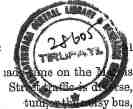

On some evenings, prornei
an instance of life in the capital.
from the horse-drawn tonga and turn-
bo the most luxurious automobile. The restaurants and
coffee-houses attract a numerous clientele of plebeian
and aristocrat; along the sidewalks stroll the people.
Women are dressed, in choice saris and elegant footwear
to match or in the Punjabi tunic and pyjama—Jmrta
i.nd salwar—and the graceful thin veil. The menfolk
M'e ia varied, attire. There is the Sikh, faithful to his
iiurban, hut immaculately dressed, in western clothes;
3adets c^nd officers in their khaki, gabardine, or Air
Force G-rey uniforms; some wear the long coat and
^Jioodidar pyjama—the pyjama somewhat like breeches
—with gay turbans or sober headgear; others come in
slofches of Miaddar and a cap of homespun clofch, the
G-andhi Cap.
The city of busy bazaars and lofty houses, the Mall
and fashionable quarters, the prefcty houses of Model
Iowa Extension, the Canfconemenfc where British and
British Indian troops are stationed—the old and the
aew, it is all there. With the changing times Lahore
has spread her boundaries and possesses many charact-
eristics that come by tradition and. others by adoption—
monuments, manners and customs—all a strange blend
of the Orient and. the Occident* Mixed, feelings does
bhis Lahore stir, gay and sad, but one feeling is upper-
most: would, that this sunny picture of the capital were
without its shadows. Shadows that grimly tell of poverty,
3f the starved and the semi-starved, of the needy or
iebt-ridden, of those many who, both to honour and
Fame unknown, eke out a; mere existence,